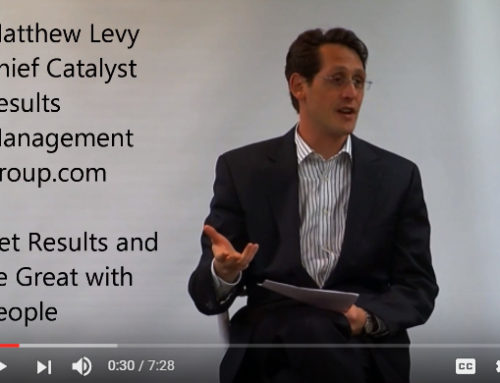Executive team dynamics can get in the way of developing and executing next year’s strategies. Here’s why—and how to identify the elephant in the room.
A healthy executive team rationally looks at last year’s performance and devises a clear strategy that sets the business up for success. But when team dynamics cloud the picture, strategies and budgets wind up weak or incomplete. And team members don’t fully commit to the plans, objectives, and actions necessary for success.
Sometimes, these issues stem from legitimate disagreements about the best path forward. Other times, executives lack the skills and ability to align, a situation made worse with poor communication, personality conflicts, or unhealthy competition over resources. This can happen in any enterprise, and family-run companies have an extra layer of personal dynamics that further complicate decision-making and alignment.
Now is the time to address team dysfunction—while the company is devising innovative strategies for next year and the budgets to match. Here’s a simplified guide to identifying some issues that can get in the way:
How dysfunctional team dynamics harm year-end strategies
As we enter the tail-end of the year, executives balance four things simultaneously:
- Ensuring results for this year
- Planning strategy for next year
- Creating a budget based on that strategy to which everyone must commit
- Preparing the company to start the year running
Unfortunately, year-end strategy development is often rushed, lacks innovation, or doesn’t occur until after a budget is hacked out. Crucial conversations don’t happen, and people pretend that the elephant in the room (or several of them) isn’t there. Little, if any, focus is put on the dysfunctional team dynamic, all resulting in an ineffective plan.
As a result, team members may inauthentically commit to plans, budgets, or targets. When this occurs or executives lack confidence in the team, the company starts the new year handicapped.
Executive team dynamics have again contaminated the process, creating a weak foundation for starting next year—at best.
Could this be happening at your company?
To find out, take a moment to consider these seven questions that reveal where your team stands and what you must address this planning season. Note that this is the short version; our proprietary executive team assessment covers 20 elements of high-performance teams. Nevertheless, answering these fundamental questions will help you identify whether team dysfunction is crippling your strategy, budgeting process, and success.
6 Questions to assess executive team alignment
- Is the company consistently meeting or exceeding its objectives? [Y, N, or Unsure]
- Are you confident that all executives are sufficiently committed to the same compelling and bold vision, strategy, plans, and goals? [Y, N, or Unsure]
- Are any team members focused on their own departmental goals to the detriment of their commitment to the top-level corporate objectives? [Y, N, or Unsure]
- Can the team discuss the most difficult issues compassionately, and bring them to resolution, decision, and follow through? [Y, N, or Unsure]
- Do the team and its members consistently do what they promise and deliver results? [Y, N, or Unsure]
- Specifically for family-run businesses: Do family dynamics get in the way of decision-making, effectiveness, or support of the company? [Y, N, or Unsure]
If you can’t confidently answer “yes” to all of these questions, executive-team dynamics will negatively impact your planning process, strategy execution, and results.
The solution and its benefits
The biggest opportunity lies in addressing executive team dynamics before yearly strategic planning and budgeting begins. But if you’ve already started planning or are about to do it, it’s still crucial to tackle the problems concurrently with the process. Here’s why:
- Identifying dysfunction may be much faster and simpler than most executives realize.
- It allows you to simultaneously uncover and address performance issues and organizational and strategic concerns.
- It allows for a better strategy and budget.
- It will have an immediate and profound impact on innovation and performance—now and next year.
- If yours is a family-owned company, it reintroduces compassion, harmony, and unity into a stable, growing business.
So, identifying team dysfunction is a crucial step—but how do you fix it?
These challenges vary among organizations and teams, but they often result from ineffective communication, personality conflicts, territorial business units, or fundamental disagreements over new objectives or last year’s performance. CEOs must ask straightforward, impactful questions—either in a group setting or with individual executives, if necessary—to identify and address the root of the problem.
Unfortunately, this is often easier said than done, especially when disagreements are personal and executives are too caught up in the situation to view it clearly. In this case, bringing in an outside perspective can be invaluable.
Results Management Group has more than two decades of experience guiding teams to achieve alignment on vision, strategy, goals, and culure. Whether setting a strategy, unearthing a hidden problem that executives avoid discussing, or making investment decisions, or just rubbing others the wrong way, we’ve just about seen it all. And, we can help you get to the bottom of the fundamental issues standing in the way of your success.
Watch this video to see how this team got unstuck and set itself up for success, in the CEO’s words, “like an Olympic rowing team:”
And, if your company is family-owned, this video is the one to watch:
Don’t let challenging team dynamics contaminate the planning process and thus start the year handicapped.
Instead, take decisive action. By addressing problems early, you can ensure the best strategy and budget possible— and hit the ground running in January.
If you think you might benefit from a valuable outside perspective along with actionable solutions, send a chat bottom right, call (888)251-2613 or email here to align your team and ensure you start the year ready to perform.
Shoot us a note to start a conversation about what next-level results look like for your company.

Matthew Levy is the Chief Catalyst and principal of RESULTS MANAGEMENT GROUP, LLC, a growth management consulting and executive coaching firm that dramatically shifts business results by facilitating the creation of compelling visions and strategies, aligning executive and other management teams, developing an organizational capacity to manage execution and designing organizational environments and family business governance that support collaboration and the attainment of dramatically better results in any area.






